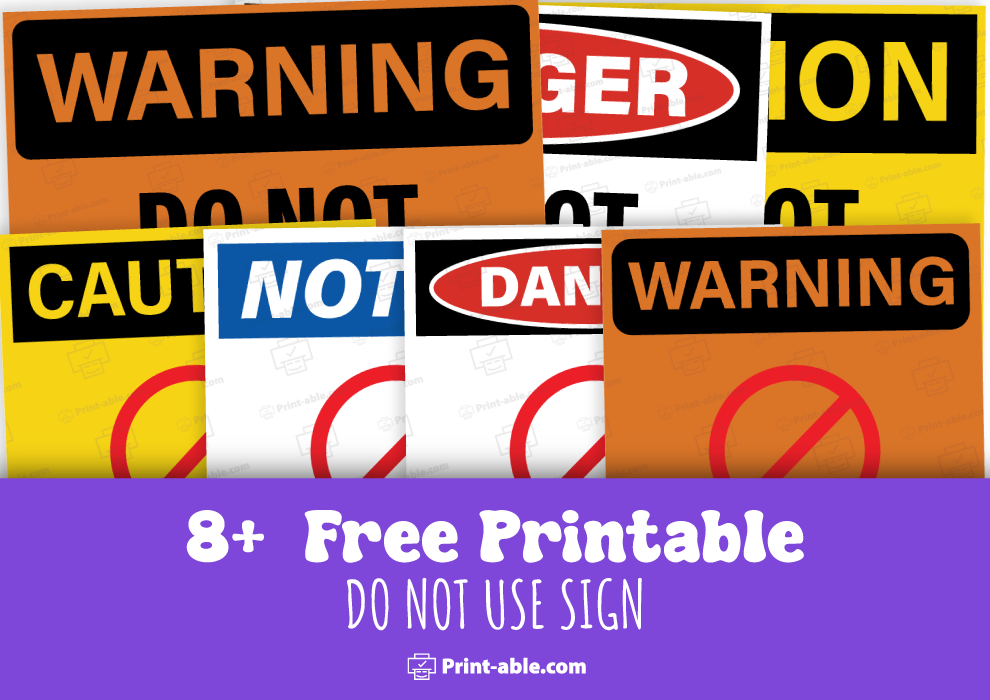Looking for a quick and easy Do Not Use sign? Our website offers a variety of free printable assets perfect for any situation, from events to home organization. All our files are completely free with unlimited downloads. Whether you need one sign or a hundred, you can get them without any cost. Enjoy the convenience of clear and consistent messages without breaking the bank. Plus, our printables are for personal use and easily sharable. Spread the word and help friends and colleagues get the signs they need. Dive in and explore our high-quality, ready-to-use printable signs today!
Do Not Use Sign Free Download
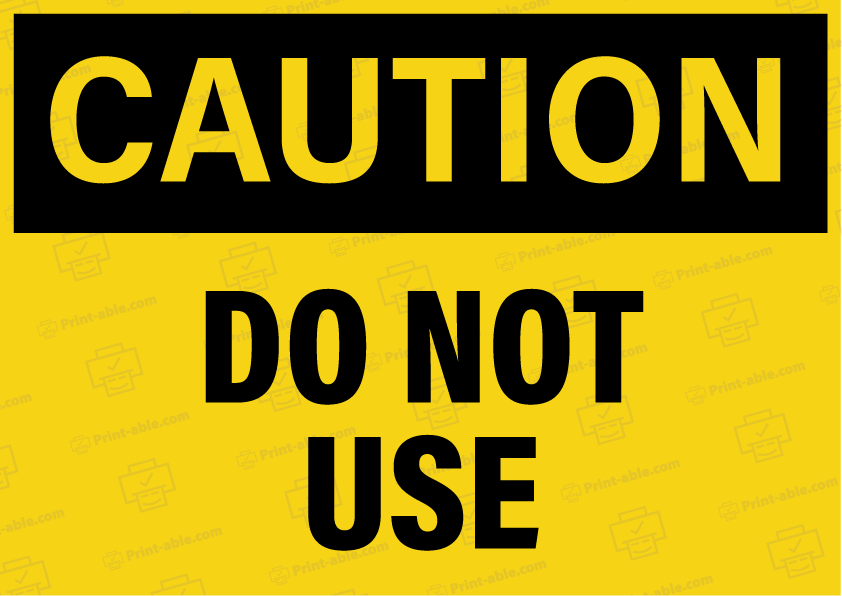
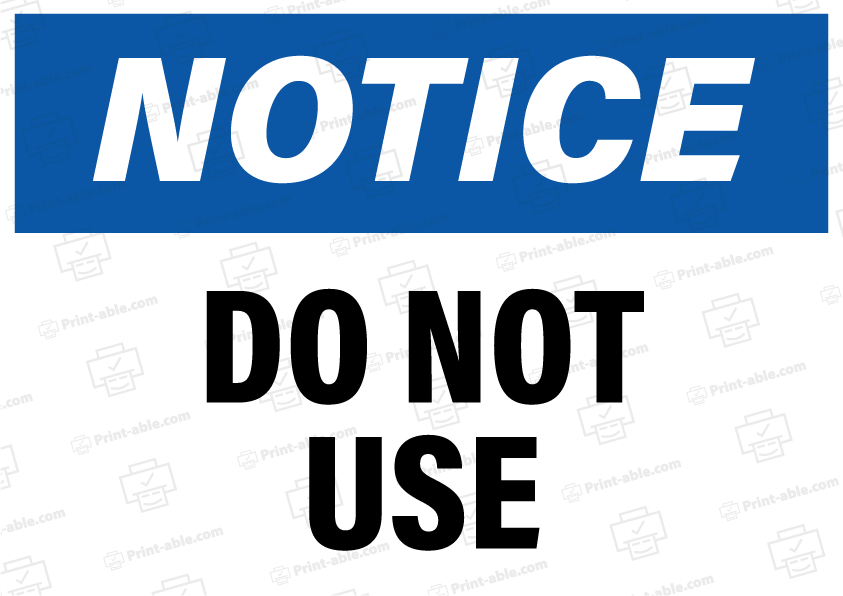
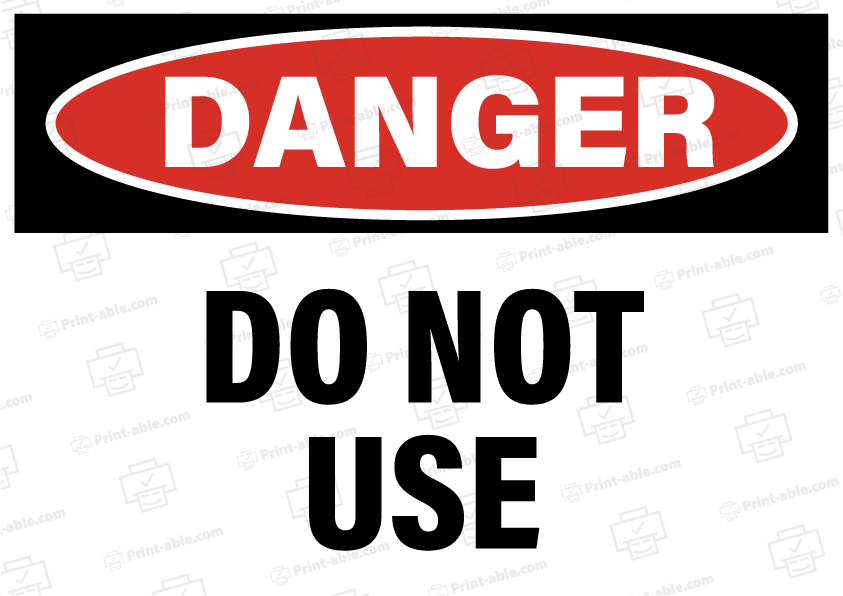
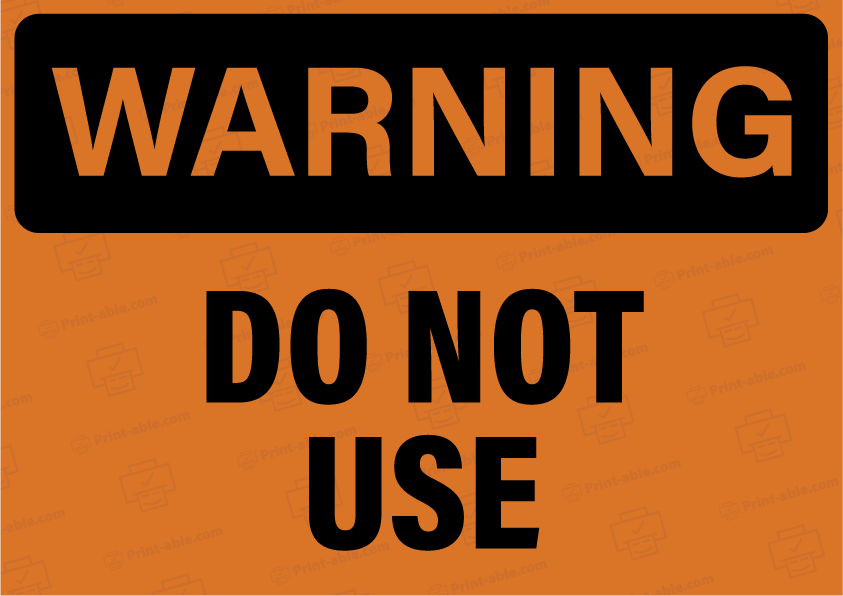
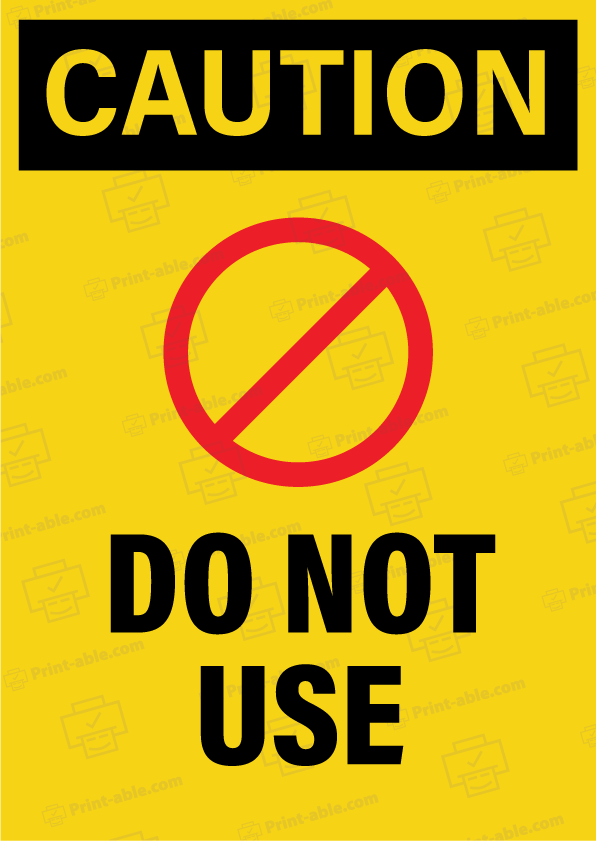
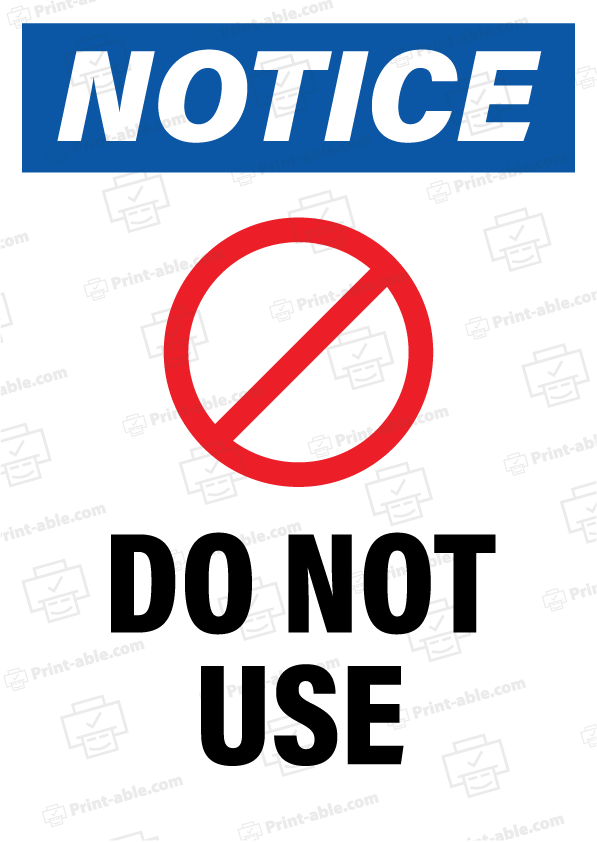
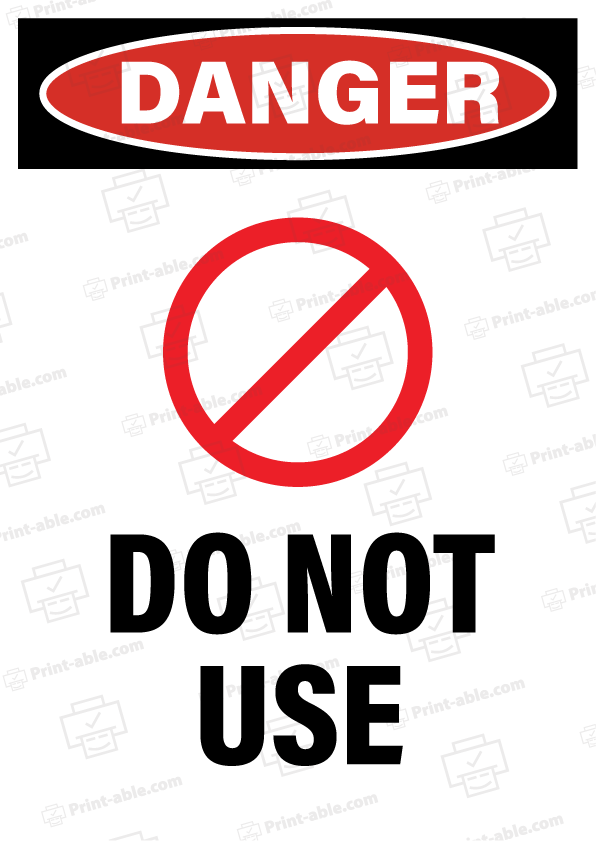
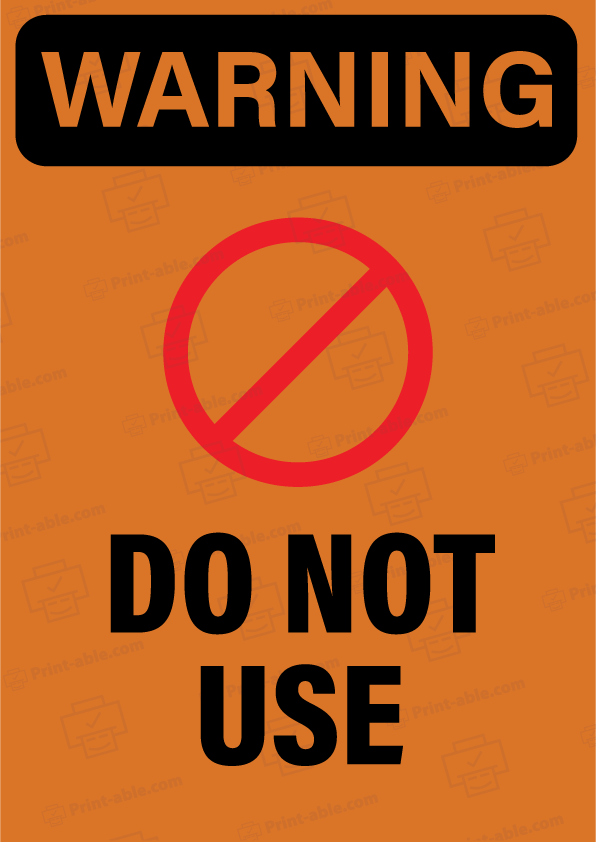
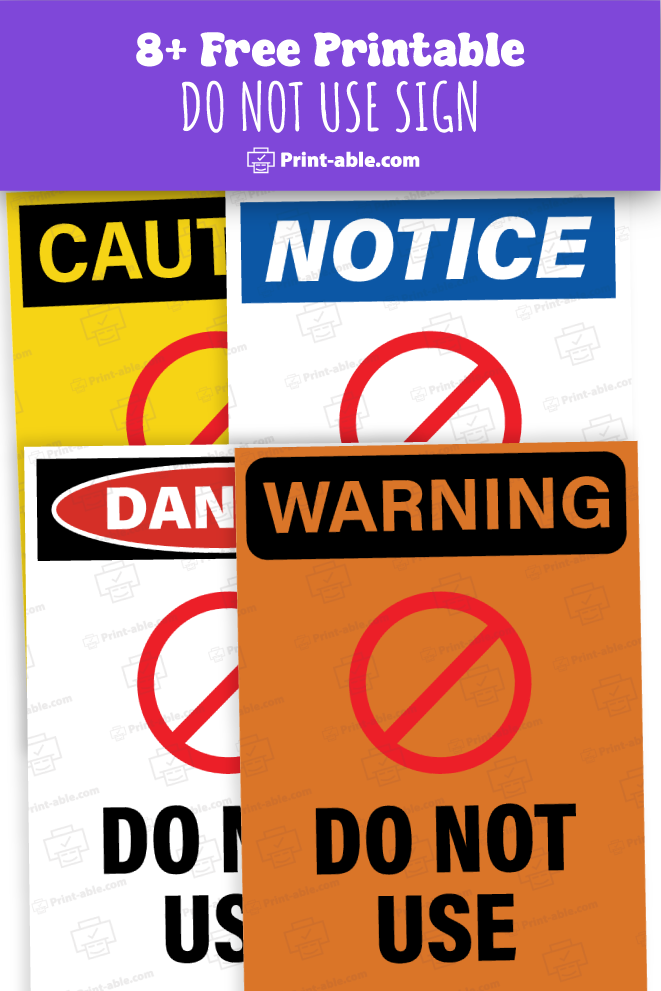
Understanding Printable Signs
Printable signs are essential tools for communication, providing clear and concise messages in various settings. From the purpose of these signs to their design principles, every detail matters.
Purpose and Use
Printable signs serve multiple purposes based on the context in which they’re used. They can convey information, provide directions, or give warnings.
For instance, informational signs might display opening hours or event schedules. Directional signs guide people to their destinations in buildings or outdoor spaces, such as exit signs or wayfinding markers. Warning signs alert individuals about potential hazards, such as wet floor warnings or construction alerts.
You can use printable signs in various settings, including offices, schools, public spaces, and events. Their versatility and ease of customization make them an invaluable tool for effective communication.
Design Principles
Effective printable signs rely heavily on design principles that ensure readability and clarity. Prioritize contrast between text and background to enhance visibility. Use bold or italic fonts to emphasize critical points or instructions.
Keep text short and straightforward. Avoid cluttering the sign with excess information. Instead, focus on delivering the core message. Use symbols or icons where possible to support the text.
Font size is crucial. Larger fonts make the message readable from a distance. Consider the viewing distance of your audience when selecting font sizes. Color schemes should be consistent with the purpose and setting of the sign, ensuring the message stands out but remains harmonious with its environment.
Creating a ‘Do Not Use’ Sign
A ‘Do Not Use’ sign needs to convey critical information clearly and adhere to legal requirements. Key aspects include essential information, compliance, and legal considerations.
Essential Information to Include
The sign must start with a clear, bold headline, such as “DO NOT USE”. This headline should be the largest text on the sign. Below the headline, include specific details about why the item or area is not to be used. This could involve safety hazards, maintenance status, or operational failures.
Additionally, use clear language that is easy to understand. Avoid technical jargon unless absolutely necessary. Include the date and time the sign was posted to provide context. Contact information for who to reach for more details or in case of emergency should also be listed.
Consider using symbols or images to enhance understanding. For example, a caution symbol can help emphasize the importance of the sign.
Compliance and Legal Considerations
Your sign must comply with local regulations and standards. Verify what specific requirements apply in your jurisdiction, such as size of the text, colors used, and placement of the sign.
Materials used for the sign should be durable and weather-resistant if placed outdoors. This ensures the sign remains visible and legible over time. Reflective material might be necessary for low-light conditions.
Documentation is crucial for legal and safety audits. Keep records of when and why the sign was placed, and any inspections or updates related to it. This documentation can help you avoid legal liabilities and ensure the safety of everyone involved.
Finally, regularly inspect and update the sign to ensure it remains in compliance and communicates the necessary information effectively.
